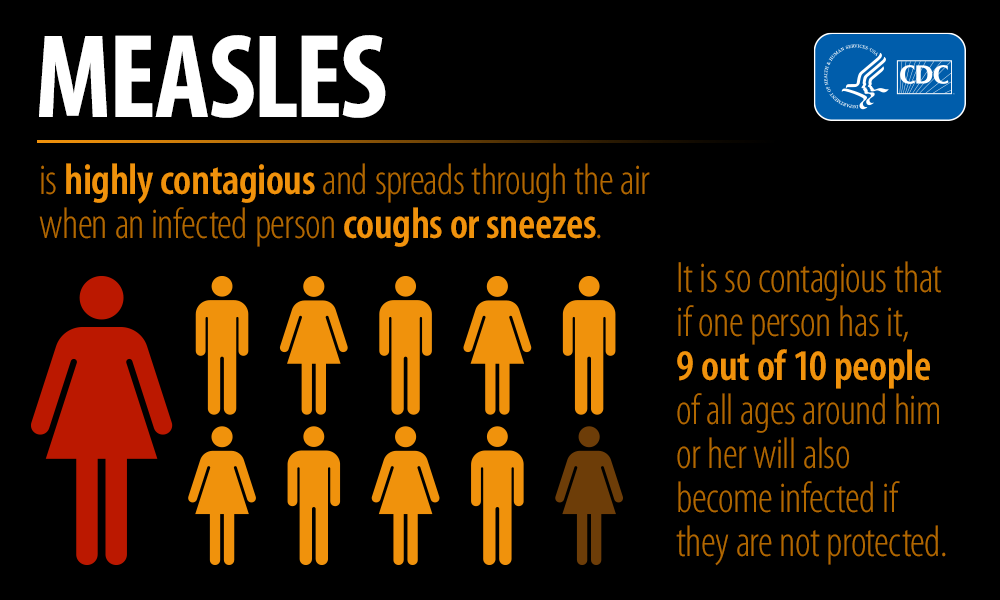Measles (Rubeola) Facts and Details
Measles: Quick Facts
Measles is an extremely contagious disease caused by the measles virus.
Measles spreads through the air and by droplets from coughing and sneezing.
YES. The best way to prevent measles is by getting the MMR vaccine. See MMR Vaccine Recommendations.
- Measles News & Updates (As of 8/22/2025 and due to Kansas no longer considered in an outbreak, measles updates have been suspended.)
- Upcoming Measles (MMR) Vaccine Clinic
(No clinics scheduled at this time.) - Video: Sarampión (en español)
- Measles Information (KDHE) (External Link)
- Measles Information (CDC) (External Link)

- Measles Fact Sheet
(en español) - Measles Isn't Just a Little Rash
(en español) - Measles (MMR) Vaccine Recommendations
(en español) - Think Measles? What to Do if You Experience Symptoms (Español & Vietnamese)
- SCHD Immunization Clinic Schedule
(en español) - Measles and the Vaccine to Prevent It
(en español)
Healthcare Providers
| What is Measles? |
Measles is a contagious disease caused by the measles virus. Measles remains a common disease in many parts of the world, including areas in Europe, Asia, the Pacific, and Africa. Before 2025, measles cases were rare in the United States and most cases resulted from international travel. |
|---|---|
| How Do You Get Measles? / How is Measles Spread? |
Measles is spread in the air and also by droplets from sneezing and coughing. If someone breathes air contaminated by measles virus or touches an infected surface then touches their eyes, nose, or mouth, they can become infected. Measles virus can live for up to two hours in the air and is so contagious that 90% of unvaccinated people close to an infected person will also become infected with measles. |
| Who is at Risk? |
Anyone who is not vaccinated can get measles, but people at risk for complications are children less than 5 years old, adults over 20 years old, pregnant women, and people with weakened immune systems. |
After exposure, symptoms usually appear in seven to 14 days. Someone with measles is contagious from four days before rash to four days after rash appears and should remain isolated at home to prevent the spread of disease.
The first symptoms of measles include:
- Mild to moderate fever
- Cough
- Runny nose
- Red eyes, and
- Sore throat
Two to three days after symptoms begin:
- Tiny white spots may appear inside the mouth
Three to five days after symptoms begin:
- A red or reddish-brown rash appears on the hairline and spreads down.
- When the rash appears, the person’s fever may spike to 104 degrees Fahrenheit.
Prevention
The best way to prevent measles is to be vaccinated with the measles-mumps-rubella (MMR) vaccine. The MMR vaccine is 97% effective at preventing measles. Prevent infections by washing your hands and avoiding sharing eating and drinking utensils.
Make sure your shots are up to date. MMR vaccine can be obtained from the Sedgwick County Health Department; call (316) 660-7300 to schedule an appointment.
- The first MMR dose is recommended at age 12-15 months.
- The second MMR dose is recommended at age 4-6 years.
- People born before 1957 are considered immune.
- People born after 1957 who have not had the disease or any MMR vaccine should be vaccinated.

